Classic Studies on the Historical Jesus (12 vols.)
Digital Logos Edition
Overview
Is the account of Jesus in the Gospels a reliable portrait of a historical figure, or an invention that needs to be demythologized? Because of the rise of higher criticism and the antisupernaturalistic presuppositions that often accompany that enterprise, modern biblical scholarship has raised the question of the historical Jesus. Some higher critical scholars saw themselves as defenders of Christianity, salvaging from the Bible what was left after modernism undercut belief in the supernatural. Others were wholly polemical toward the Bible. The methods and presuppositions of this extremely significant movement have shaped the direction of Jesus studies from the eighteenth century up to the present day. With writings from many of the major scholars that made up the so-called “first quest” for the historical Jesus—Albert Schweitzer, William Wrede, Baron d’Holbach, and others—this collection provides key primary sources for researching this subject, which has been foundational in the development of biblical and theological studies.
With the Logos edition of this collection, you can easily search for the exact data you want to find. In seconds, gather all of Schweitzer’s comments on Matthew 10. Read what all these authors have to say about the two accounts of Jesus cleansing the temple and feeding the five thousand. With Logos, all Scripture passages appear on mouseover, and any resources in your library cited in this collection are seamlessly linked together for easy reference.

- Classic works on the historical Jesus, all in one collection
- Schweitzer’s overview of the field, from Reimarus to Wrede
- Title: Classic Studies on the Historical Jesus
- Volumes: 12
- Pages: 3,984
- The Life of Jesus Critically Examined by David Friedrich Strauss
- The Quest for the Historical Jesus: A Critical Study of Its Progress from Reimarus to Wrede by Albert Schweitzer
- The Mystery of the Kingdom of God: The Secret of Jesus’ Messiahship and Passion by Albert Schweitzer
- Ecce Homo! A Critical Inquiry into the History of Jesus of Nazareth by Baron d’Holbach
- Fragments from Reimarus Consisting of Brief Critical Remarks on the Object of Jesus and His Disciples as Seen in the New Testament by G. E. Lessing
- Life of Jesus by Ernest Renan
- Paul by William Wrede
- The Origin of the New Testament by William Wrede
- A Discourse of Matters Pertaining to Religion by Theodore Parker
- An Inquiry Concerning the Origin of Christianity by Charles Christian Hennell
- Paul and Jesus by Johannes Weiss
- Christ: The Beginning of Dogma by Johannes Weiss
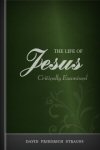
According to Schweitzer, the quest for the historical Jesus began with Reimarus. As his biographer, David Friedrich Strauss is the man who brought Reimarus to public light and carried on his work in his German Das Leben Jesu. With the English translation of this massive volume, take a firsthand look into the methods and theories of this early critical scholar whose work would shape the trajectory of Jesus studies into the present day.
“The Life of Jesus begins with a development of history and an overview of mythological, historical and natural criticisms. Rejecting both the ‘rationalists’ (explaining the miraculous events of the Bible through scientific means) and the ‘supernaturalists’ (accepting miracles as a possibility), Strauss advocated a third approach to the gospel stories—the ‘mythical approach.’ He argued that, instead of recording an event that actually happened, the gospels use religious imagery derived from tradition to express the spiritual significance of various events in Jesus’ life. He asserts that the gospel writers assigned Jewish ideas related to the character and action of the Messiah to the figure Jesus in order to present Him as the Messiah” (Lexham Bible Dictionary).
The Leben Jesu of David Friedrich Strauss, which was published in the year 1835, marked an epoch in the history of theology.
—From the introduction to the English translation
Considered as a literary work, Strauss’s first Life of Jesus is one of the most perfect things in the whole range of learned literature. In over fourteen hundred pages he has not a superfluous phrase; his analysis descends to the minutest details, but he does not lose his way among them; the style is simple and picturesque sometimes ironical, but always dignified and distinguished.
—The Quest for the Historical Jesus, by Albert Schweitzer
David Friedrich Strauss (1808–1874) was a German theologian and early scholar in the so-called “first quest” for the historical Jesus. At the age of twelve, he began studying theology at the seminary in Blaubeuren under notable figures like Ferdinand Christian Baur. He went on to study at the University of Tübingen. He continued his studies in Berlin with Schleiermacher. Through his writings, Strauss became a very significant figure in German theological studies.
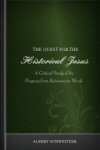
This volume is essential for anyone interested in understanding the development of historical-Jesus studies since the discipline’s eighteenth-century genesis with Hermann Samuel Reimarus. While not an orthodox evangelical himself, Schweitzer presented a probing analysis of those who sought to reinvent Jesus according to commitments of liberal theology. So scathing was his critique that he almost singlehandedly ended the first quest for the historical Jesus. Schweitzer’s view was no more congenial to the biblical record, concluding that the Jesus of the Gospels never existed. However, he also convincingly argued that modern liberal theologians were merely making a Jesus after their own image.
Schweitzer begins with an overview of the quest for the historical Jesus. He then carefully traces its development from Reimarus through Schleiermacher and on to Strauss, Baur, and Wrede. He then summarizes the state of the quest at the turn of the twentieth century and presents the results of his critical analysis of this significant enterprise.
Albert Schweitzer’s Quest of the Historical Jesus is one of a small handful of classic texts that should be near the top of the ‘must read’ list of anyone who wants to gain an understanding of the ‘inherited tradition’ of Leben-Jesu-Forschung, for to Schweitzer and his Quest are owed the credit of not only furnishing the preeminent survey of the so-called old quest but in so doing also providing its effectual epitaph, at least in the form of the eighteenth and nineteenth-century efforts that Schweitzer chronicled.
Albert Schweitzer (1875–1965) was a German theologian, musician, pastor, doctor and missionary. He studied theology, philosophy, and music at the Kaiser Wilhelm University in Strassburg. He did his PhD work at the Sorbonne in Paris. He went back to Strassburg for his MD in 1913. In 1952, he was awarded the Nobel Peace Prize for his medical work in Africa, where he founded the Albert Schweitzer hospital. He is best known for his work on the historical Jesus, especially The Quest for the Historical Jesus.
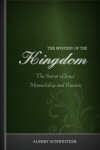
Of all his writings, “It is Schweitzer’s interpretation of Jesus and his teaching, especially regarding the kingdom of God, that has had the most influence on subsequent New Testament studies” (Historical Handbook of Major Biblical Interpreters). In this volume, Schweitzer takes up the topic of the historical Jesus, but with particular focus on the kingdom of God.
Many skeptical scholars of the day saw Jesus’ secrecy regarding his Messiahship as a later invention. Against this view, Schweitzer argued that the Gospel records were genuine on this account. However, his alternate view was no more congenial to orthodox Christianity. Schweitzer understood Jesus to be someone who saw himself as chosen by God to bring in the eschatological kingdom of God. Jesus therefore proclaimed an ethic that was congruent with the impending eschatological consummation. However, when that did not happen, Jesus sought to force this climactic event with his crucifixion. Instead of seeing the eschatological elements of Jesus’ ministry as a later invention—the view of liberal critical scholars—Schweitzer saw it as the authentic underpinning of Jesus’ message, ultimately mistaken though it was.
Albert Schweitzer (1875–1965) was a German theologian, musician, pastor, doctor and missionary. He studied theology, philosophy, and music at the Kaiser Wilhelm University in Strassburg. He did his PhD work at the Sorbonne in Paris. He went back to Strassburg for his MD in 1913. In 1952, he was awarded the Nobel Peace Prize for his medical work in Africa, where he founded the Albert Schweitzer hospital. He is best known for his work on the historical Jesus, especially The Quest for the Historical Jesus.
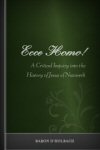
An eighteenth century-Christopher Hitchens, Baron d’Holbach begins this polemical tome with the rebuke, “Although the writings of the New Testament are in the hands of everyone, nothing is more uncommon than to find the professors of Christianity acquainted with the history of the founder of their religion; and even among those who have perused that history, it is still more rare to find any who have ventured seriously to examine it.” Taking his title from Pilate’s words in the Latin text of John 19:5, “behold the man,” Baron d’Holbach presents a critical study of the historical Jesus according to d’Holbach’s atheistic worldview.
Baron d’Holbach (1723–1789), born Paul Heinrich Dietrich, was a French atheist philosopher. He was educated at Leiden University from 1744 to 1748. Baron d’Holbach was a prolific author, and many of his writings were polemical against religion.
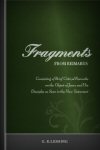
In this important work, Lessing presents some of the writings of Reimarus, the father of the quest for the historical Jesus. Found in the library of the Duke of Brunswick, these fragments represent the genesis of historical Jesus studies, which would shape centuries of biblical and theological scholarship. In these fragments, Reimarus argued that Jesus was a pious Jew who desired to see the coming of God’s kingdom and eventually reached the point where he felt he could force God’s hand to bring in that kingdom by being killed as a martyr. Then, according to Reimarus, the disciples engineered the resurrection account, which provided the impetus for the rise of Christianity. Reimarus paved the way for this theory to be carried on in biblical and theological scholarship up to Schweitzer and beyond. This volume also includes Lessing’s sketch of Reimarus’ life, which complements the study of his writings on this important subject.
Gotthold E. Lessing (1729–1781) was a German philosopher, author, and dramatist. He was educated in Leipzig in theology and medicine from 1746 to 1748.

In this volume by Renan, an important figure in historical Jesus studies, Jesus is presented as a gifted teacher but not divine. Renan thoroughly presents the historical data on the life of Christ and offers a reconstruction of the historical Jesus, beginning with his early life and continuing through his crucifixion and burial.
Ernest Renan (1823–1892) was a French historian and Semitics scholar. He was educated at the seminary of St. Nicholas du Chardonnet in Paris where, through the study of higher criticism, he began to question the truthfulness of Christianity. He was the chair of Hebrew at the College of France in 1862, but he was not allowed to continue after the publication of his Life of Jesus. However, under the secularist Third Republic, he returned and later became director of the college.

In this seminal work, Wrede presents the religion of Jesus as a rather insignificant Jewish sect that would have surely faded into obscurity unless Paul had come along with his innovations that put Christianity on a trajectory toward what it is today. For this reason, Wrede concludes that “Paul is to be regarded as the second founder of Christianity.”
This extensive study of Paul begins with biographical sections on his life and work. Wrede goes on to present a detailed analysis of Paul’s theology. Wrede also contrasts Paul’s teaching with the Judaism of the day and presents an explanation of the controversy between Paul and his opponents. Wrede concludes with a discussion of Paul’s place in the history of Christian origins. This volume is another must-read for those wanting to understand the higher critical movement in biblical studies.
. . . brilliantly composed and presenting the radical position with provocative force.
William Wrede (1859–1906) was a German theologian and pastor. Due to the influence of his secondary-school classics teacher, an ardent defender of Ritschlianism, Wrede went to Leipzig to study theology. It was here that he became a proponent of the history of religions school. From 1886 to 1889, Wrede was a pastor in Langenholzen-Hörsum before becoming a professor at Breslau in 1893, where he continued until his death in 1906.
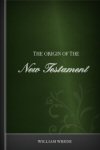
In this short work, Wrede presents a higher critical view of how the New Testament Scriptures came to be. Originally delivered as lectures to laypeople, this concise work is straightforward and accessible. Wrede argues that Paul’s writings are the earliest of the New Testament. This, of course, fits well with the thesis of his other work, Paul, in which he argues that the apostle was the second founder of Christianity and even drastically reshaped it after Jesus left the scene.
After a discussion of the Pauline Epistles, Wrede goes on to discuss the Gospels and then the remaining books of the New Testament. Finally, Wrede presents a theory of how the individual books of the New Testament were eventually compiled into the form of the New Testament as we have it today. His conclusion is this: “The whole history of the Canon palpably teaches us, therefore, that it is the Church which created the New Testament. And the Church is by no means the community of all believers, but in truth the governing theologians and bishops, it is they who were the proper framers of the canon.” In many ways, this short but significant work anticipated the recent writings of Elaine Pagels and Barth Ehrman that have become so popular.
William Wrede (1859–1906) was a German theologian and pastor. Due to the influence of his secondary-school classics teacher, an ardent defender of Ritschlianism, Wrede went to Leipzig to study theology. It was here that he became a proponent of the history of religions school. From 1886 to 1889, Wrede was a pastor in Langenholzen-Hörsum before becoming a professor at Breslau in 1893, where he continued until his death in 1906.
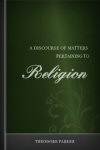
More popularly known as “Parker’s Discourse of Religion,” this book is an expansion of five lectures delivered by Theodore Parker in Boston. In this then-radical volume, Parker argues what has become standard in liberal theology—that Christ’s enduring significance is found in his moral teachings, not any supernatural nature that he possessed. Parker stated this at the outset when he wrote, “It is the design of this work to recall men from the transient shows of time, to the permanent substance of religion; from a worship of creeds and an empty belief, to a worship in the spirit and in life.” Parker begins by discussing religion in general and moves to more specific topics like the relationship between God and nature, inspiration, the Bible, and the church. Take up this book to look into the development of liberal theology in America from one of its influential proponents.
Theodore Parker (1810–1860) was an American Universalist minister and theologian. He attended Harvard Divinity School and graduated in 1836. After the publication of A Discourse of Matters Pertaining to Religion, the Unitarian church saw Parker as too radical and distanced itself from him. He later became the pastor of a church in Boston, where the congregation grew to 7,000. He ministered there until his death.

Hennell began his study of the life of Jesus with the expectation that at least the “principle” miracles that provide the foundation for Christianity would be found true. However, by the end of his research, he came to the conclusion that “the true account of the life of Jesus Christ, and of the spread of his religion, would be found to contain no deviation from the known laws of nature, nor to require, for their explanation, more than the operation of human motives and feelings, acted upon by the peculiar circumstances of the age and country whence the religion originated.” Hennell came to see the doctrine of inerrancy as a hindrance to the full application of critical study to the Bible. This volume is the first attempt in English to critically examine Jesus as any other historical figure with modern critical methods.
Charles Christian Hennell (1809–1850) was an English merchant and friend of George Eliot. He took several years off from his business to study in preparation for writing on the historical Jesus.

In this important work, Weiss presents his study of the relationship between Paul and Jesus, who, according to Wrede, are the two founders of Christianity. While conceding to Wrede that there is notable departure between Jesus’ and Paul’s religion, Weiss makes his own contribution in this work. Beginning with a discussion of Wrede’s theory, Weiss goes on to look at the theology of Paul, as well as Paul’s knowledge and visions of Jesus. In addition to the influence of Jesus upon Paul, Weiss also considers the rabbinic influence that can be seen in Paul’s doctrine and writings. Weiss also examines specific doctrines in Paul’s theology, like Christology, soteriology, eschatology, and others. Weiss concludes that, indeed, Paul’s religion was different from Jesus’. The implication is that if the earliest Christianity was a departure from the teaching of Jesus, then innovation in modern theology should not be disturbing.
Johannes Weiss (1863–1914) was a German theologian and biblical scholar. The son of the prominent New Testament scholar Bernhard Weiss, Weiss studied extensively at Marburg, Berlin, Göttingen and Breslau. Weiss’ theological prowess was soon clear. He wrote many technical works in New Testament studies and was a pioneer of form criticism. Weiss began teaching at Göttingen and later received a full professorship at Marburg, where he married Albert Ritschl’s daughter. He later moved to Heidelberg, where he stayed until his death.
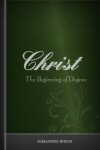
What do the terms “Son of God,” “Son of Man,” “Lord,” and “Messiah” mean? What did they mean for the first Christian community that used them? In this volume, Weiss sets out to answer these questions by examining the most ancient records of Christianity. He attempts to explain the sudden origin of a relatively complete Christology in the early church by seeing it as a rapid fusing of the existing Messianic theology of Judaism with the distinctive person of Jesus. The most distinctive feature being the resurrection, which Weiss supposes is the result of the amazing impact Jesus had on his followers, which drove them to believe that he rose from the dead after his crucifixion and therefore became “the divine Soul of the world, creative and active from all eternity.” This important work is broken up into three sections. The first deals with the faith of the primitive community. The second is an examination of Paul’s theology. The last section considers post-Pauline Christology.
Johannes Weiss (1863–1914) was a German theologian and biblical scholar. The son of the prominent New Testament scholar Bernhard Weiss, Weiss studied extensively at Marburg, Berlin, Göttingen and Breslau. Weiss’ theological prowess was soon clear. He wrote many technical works in New Testament studies and was a pioneer of form criticism. Weiss began teaching at Göttingen and later received a full professorship at Marburg, where he married Albert Ritschl’s daughter. He later moved to Heidelberg, where he stayed until his death.
Reviews
11 ratings

Dustin Payne
9/27/2014

Allen Bingham
4/7/2014
Herbert Chan
2/21/2014

Clifford B. Kvidahl
1/3/2014

David Leslie Bond
11/20/2013

Larry Proffitt (I
11/13/2013
Bobby Terhune
10/13/2013

Bill Shewmaker
10/8/2013

James C.
9/19/2013

Faithlife User
8/1/2013